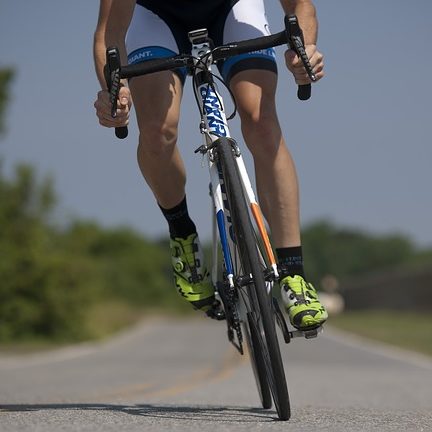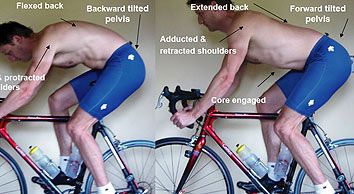Keep on Pedaling: How to Saddle Up and Reduce Back Pain
By Matt Flanigan, PT, DPT, Cert. DN
AZOPT Goodyear Physical Therapist
Cycling is an excellent cardiovascular exercise that is also great for developing quadriceps and calf muscles. However, cycling does not promote good posture. In fact, it promotes terrible posture. This poor posture leads to pain. Whether you’re a competitive cyclist, a casual bicyclist, or the occasional commuter, you likely have experienced back pain at some point.
Fear not, there is good news – bikes are adjustable! Cyclists can adjust their bikes to improve posture and comfort while maintaining the efficacy of their bike. For example, you can adjust the saddle (seat) height, inclination angle, forward position, handlebar width and rise, the stem length and rise, and the crank arm length. For the purposes of this article, we will focus on seat adjustments for decreasing back pain.
The best position of the low back is the natural lordotic curve (also known as arched inward slightly). Bikes do not naturally allow for this type of posture. In order to fix this, we must minimize lumbar flexion. Here is a side by side image of bad posture versus ideal posture. On the left, we see the more common, bad posture that leads to back pain. On the right is excellent cycling posture:
To accomplish the right image and have excellent cycling posture to reduce back pain, try the following seat adjustments:
Saddle inclination angle
In general, tilting the saddle nose up will decrease lordosis (back arch) while tilting it down will increase lordosis to improve posture. It is important to note, however, that too much back arch is not good.
Saddle fore/aft positioning
This is the forward or backward position of the seat relative to the seat post. Bringing it closer will change the posture of the low back, either decreasing or increasing the lordosis depending on its current position.
Saddle height
Ideally, the saddle should be set at a height where the knee is in slight (about 10-15 degrees) flexion. Lowering the saddle will put the low back in a better position relative to the handlebar. However, the downside to this is potentially increasing stress through the knee joints.
Keep in mind that all adjustments made here will also change things in other parts of the body. No adjustment will work perfectly for everyone, so try one for a couple rides, and then try a different adjustment. Be scientific about it and only change one variable at a time initially.
If you have pain, and would like to assess your riding posture, please feel free to contact me or schedule an evaluation. Good luck and happy riding!








